The “Wan Wu Xian Li” tablet bestowed by Qing Emperor Guangxu in 1885 moved from Tung Wah Hospital to Hong Kong Museum of History for restoration and display
A large-scale exhibition, “Hong Kong, Benevolent City: Tung Wah and the Growth of Chinese Communities”, will be jointly presented by the Leisure and Cultural Services Department and Tung Wah Group of Hospitals (TWGHs) to celebrate the 140th anniversary of TWGHs. The exhibition is going to introduce the Group’s contribution to Hong Kong society and overseas Chinese communities through sharing with the public the history on its medical and health, education and community welfare services, disaster relief, burial of overseas Chinese in their hometown and cultural preservation. It will give visitors a better understanding of how TWGHs has grown as Hong Kong develops as well as the influential role it plays in the global Chinese charity network. In addition, the exhibition will support the New Senior Secondary (NSS) Liberal Studies as students may learn the rich and comprehensive local culture materials through participating in the diversified educational activities.
As the first large-scale exhibition ever organized by the Hong Kong Museum of History with a non -government organization, the “Hong Kong, Benevolent City: Tung Wah and the Growth of Chinese Communities” exhibition will be held at the Museum of History from 27 October 2010 to 17 January 2011. There will be 250 relics in various sizes including tablets displayed in the 7 featured sections. To ensure exhibits are displayed in the best condition, a number of items which include the precious tablets kept in the Tung Wah Museum, were sent to the Central Conservation Section for restoration, Apart from relics that are full of historical memory, around 200 old photos and a couple of video clips on special topics will be showing in the exhibition venue.
Training was provided by the TWGHs Records and Heritage Office for over 30 students of the Group’s community college and secondary schools to prepare them to serve as exhibition ambassadors and to lead guided tours during the exhibition. The training also aimed at improving students’ understanding of Group and the early history of Hong Kong, besides enhancing their interest in serving the community.
At a press briefing held at the Assembly Hall of Tung Wah Hospital on 20 September 2010, a gem of the collection items of Tung Wah Hospital – a tablet bearing the inscription “Wan Wu Xian Li” bestowed by Qing Emperor Guangxu – was removed and lowered at the Assembly Hall of Tung Wah Hospital for moving to the Hong Kong Museum of History for restoration before showing at the upcoming exhibition. “Wan Wu Xian Li” means the whole world benefits from benevolent behaviour and actions. This wooden tablet (122 cm in height and 384 cm in length) weighs around 250 kg and was inscribed by a member of the Imperial Academy hand-picked by Emperor Guangxu. The stamp of the imperial seal is in the middle of the plaque. Above the stamp is a dragon head sculpture plated with gold, a symbol of the emperor. Golden dragon decorations can also be found on the wooden frame. The tablet was first hung in the hall of Tung Wah Hospital. After the founding of Tung Wah Hospital, the Group has demonstrated the spirit described by the tablet through providing free medical services and free medicine, as well as other charity relief work not only within Hong Kong but also in Mainland provinces and overseas Chinese communities.
* End *
For media enquiries, please contact Ms. Ivy LAU, Principal Corporate Communications Manager, at 2859 7853.
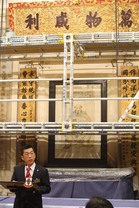
Mr. Billy LEUNG, the Chairman, speaking on the background and content of the upcoming exhibition.
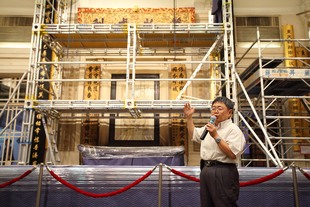
Dr. Joseph TING, Expert Advisor to the Hong Kong Museum of History and Advisor to the Exhibition, introducing the history of early Chinese community when going through the plaques and tablets at the Assembly Hall of Tung Wah Hospital.

Mr. CHAN Shing-wai, Chief Curator (Conservation) of Leisure and Cultural Services Department, sharing with participants the technicalities of preserving the tablet and other valuable relics to be displayed at the Exhibition.
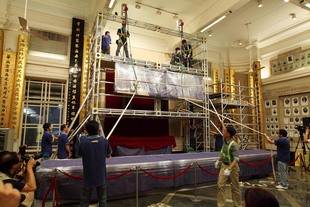
The “Wan Wu Xian Li” tablet bestowed by Qing Emperor Guangxu in 1885 is temporarily removed from Tung Wah Hospital and sent to Hong Kong Museum of History for restoration and exhibiting.
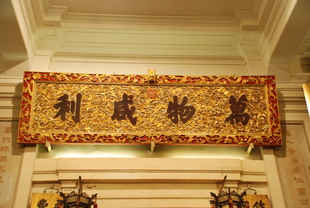
Tablet bearing the inscription “wan wu xian li” (meaning “all benefit from charitable deeds”), 10th year of the reign of Guangxu, Qing dynasty (1885). Collection of Tung Wah Group of Hospitals
In June of 1885, heavy rains caused a destructive flood that claimed almost 5,000 lives in the Guangdong and Guanxi provinces. At that time, Tung Wah Hospital raised over $100,000 for disaster relief and the “Wan Wu Xian Li” tablet was bestowed upon Tung Wah Hospital by Qing Emperor Guangxu as a result.

Sedan chair for carrying the deities’ statues of the Man Mo Temple, 1st year of the reign of Tongzhi, Qing dynasty (1862). Collection of Tung Wah Group of Hospitals
This luanyu (imperial sedan chair) was jointly presented to the temple by its directors, the residents of Four Wan and Chinese merchants in Hong Kong in the first year of the reign of Tongzhi in the Qing dynasty (1862). It carries the statues of Wenchangdi and Guandi in parades during annual celebrations for the deities’ respective birthdays.
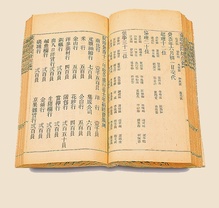
Zhengxin Lu of Tung Wah Hospital (1873), Printed in 1874, Collection of Tung Wah Museum
This Zhengxin Lu is the earliest issue in the Tung Wah Museum collection and serves a similar purpose as the annual reports of modern organizations. It contains such information as the hospital’s founding mission, rules and regulations of operation as well as monitoring mechanism.
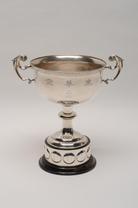
Trophy for the three-time winners of the Public Housing Estate Fund-raising Competition of the Tung Wah Charity Gala, 1982-84. Collection of the Choi Hung Estate Residents Committee
Since its inaugural staging in 1979, the Tung Wah Charity Gala has become a major source of funding for the Tung Wah Group of Hospitals. Choi Hung Estate was twice three-time champion of the Public Housing Estate Fund-raising Competition. This outstanding achievement was recognized through the award of this trophy by the Tung Wah Group of Hospitals.



